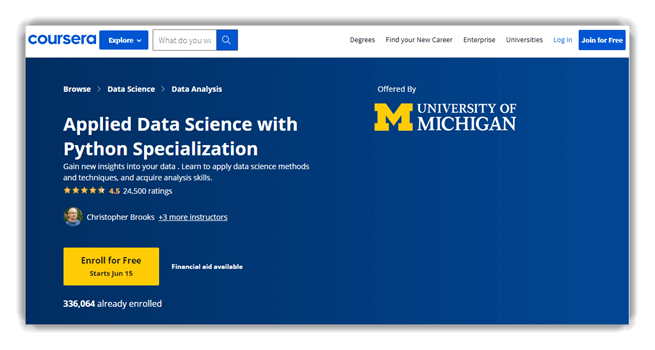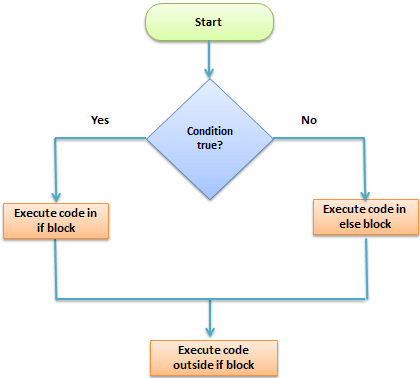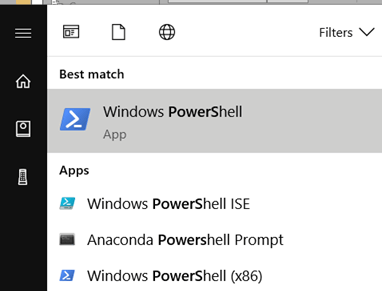Python Tutorial for Beginners: Learn Programming Basics [PDF]
Python Tutorial Summary
In this Python tutorial for beginners, you will learn Python programming basics and advanced concepts. This Python course contains all the Python basics from installation to advanced stuff like Python data science. This Python programming tutorial helps you to learn Python free with Python notes and Python tutorial PDF. These Python tutorials will help you learn the basics of Python.
What is Python Programming Language?
Python is an object-oriented programming language created by Guido Rossum in 1989. It is ideally designed for rapid prototyping of complex applications. It has interfaces to many OS system calls and libraries and is extensible to C or C++. Many large companies use the Python programming language, including NASA, Google, YouTube, BitTorrent, etc.

Python Syllabus
Python Programming Basics for Beginners
| 👉 Lesson 1 | Install Python IDE — How to Install Python on Windows [Pycharm IDE] |
| 👉 Lesson 2 | Python Hello World — Create Your First Python Program |
| 👉 Lesson 3 | Python print() Function — How to Print in Python with Examples |
| 👉 Lesson 4 | Python Variables — How to Define/Declare String Variable Types |
| 👉 Lesson 5 | Escape Character Sequences — Python Escape Character Sequences (Examples) |
| 👉 Lesson 6 | How to check the Python Version — Windows, Mac, Linux, Script, Command Line |
| 👉 Lesson 7 | How to Run Python Scripts — Step by Step Guide |
Python Data Structure
| 👉 Lesson 1 | Python TUPLE — Pack, Unpack, Compare, Slicing, Delete, Key |
| 👉 Lesson 2 | Python Dictionary(Dict) — Update, Cmp, Len, Sort, Copy, Items, str Example |
| 👉 Lesson 3 | Python Dictionary Append — How to Add Key/Value Pair |
| 👉 Lesson 4 | Python Operators — Arithmetic, Logical, Comparison, Assignment, Bitwise & Precedence |
| 👉 Lesson 5 | Python Not Equal (!=) — Python Not Equal (!=) Operator with Examples |
| 👉 Lesson 6 | Python Arrays — Create, Reverse, Pop with Python Array Examples |
| 👉 Lesson 7 | Python 2D Arrays — Python 2D Arrays: Two-Dimensional List Examples |
Python Conditional Loops
| 👉 Lesson 1 | Python Conditional Statements — IF…Else, ELIF & Switch Case |
| 👉 Lesson 2 | Python For & While Loops — Enumerate, Break, Continue Statement |
| 👉 Lesson 3 | Python break, continue, pass statements — Learn with Example |
| 👉 Lesson 4 | Python OOPs — Class, Object, Inheritance and Constructor with Example |
| 👉 Lesson 5 | Python Polymorphism — Polymorphism in Python with EXAMPLES |
| 👉 Lesson 6 | Mutable & Immutable Objects — Mutable & Immutable Objects in Python {EXAMPLES} |
Python Strings
| 👉 Lesson 1 | Python Strings — Replace, Join, Split, Reverse, Uppercase & Lowercase |
| 👉 Lesson 2 | Python String strip() Function — What is, Examples of strip() Function |
| 👉 Lesson 3 | Python String count() — Python String count() Method with Examples |
| 👉 Lesson 4 | Python String format() — What is, How works & Examples |
| 👉 Lesson 5 | Python String len() Method — Python string length | len() method Example |
| 👉 Lesson 6 | Python String find() Method — Python string.find() Method With Examples |
| 👉 Lesson 7 | Python String split() Method — Python String split(): List, By Character, Delimiter EXAMPLE |
| 👉 Lesson 8 | How to reverse a String — How to reverse a String in Python (5 Methods) |
Python Functions
| 👉 Lesson 1 | Python Main Function & Method Example — Understand __main__ |
| 👉 Lesson 2 | Python Functions Examples — Call, Indentation, Arguments & Return Values |
| 👉 Lesson 3 | Lambda Functions in Python — Python Lambda Functions with EXAMPLES |
| 👉 Lesson 4 | Python abs() Function — Absolute Value Examples |
| 👉 Lesson 5 | Python round() Function — What is the round() function in Python? |
| 👉 Lesson 6 | Python range() Function — Float, List, For loop Examples |
| 👉 Lesson 7 | Python map() Function — What is the map() function in Python? (With Examples) |
| 👉 Lesson 8 | Python Timeit() with Examples — What is Python Timeit()? |
| 👉 Lesson 9 | Yield in Python Tutorial — Generator & Yield vs Return Example |
| 👉 Lesson 10 | Python Queue — FIFO, LIFO Example |
| 👉 Lesson 11 | Python Counter in Collections — What is, Use & Examples |
| 👉 Lesson 12 | Enumerate() Function in Python — Loop, Tuple, String (Example) |
| 👉 Lesson 13 | Python time.sleep() — Add Delay to Your Code (Example) |
| 👉 Lesson 14 | type() and isinstance() in Python — What is, Syntax & Examples |
| 👉 Lesson 15 | Python New Line — How to Print WITHOUT Newline in Python |
| 👉 Lesson 16 | Python Timer Function — Measure Elapsed Time with EXAMPLES |
Python File Handling
| 👉 Lesson 1 | Python File Handling — How to Create, Open, Append, Read, Write |
| 👉 Lesson 2 | Python Check If File or Directory Exists — How to Check |
| 👉 Lesson 3 | Python Copy File Methods — Python COPY File using shutil.copy(), shutil.copystat() |
| 👉 Lesson 4 | Python Rename File — Python Rename File and Directory using os.rename() |
| 👉 Lesson 5 | Python ZIP file with Example — How to create Zip File in Python with Examples |
| 👉 Lesson 6 | Python Exception Handling — Try, Catch, Finally |
| 👉 Lesson 7 | Python readline() Method — What is Python readline? (With Examples) |
Python Data Science
| 👉 Lesson 1 | SciPy in Python Tutorial — What is | Library & Functions Examples |
| 👉 Lesson 2 | Reading and Writing CSV Files in Python — Using Module & Pandas |
| 👉 Lesson 3 | Python JSON — Encode(dumps), Decode(loads) & Read JSON File |
| 👉 Lesson 4 | Python with MySQL — Connect, Create Database, Table, Insert [Examples] |
| 👉 Lesson 5 | PyUnit Tutorial — Python Unit Testing Framework (with Example) |
| 👉 Lesson 6 | Facebook Login using Python — FB Login Example |
| 👉 Lesson 7 | Python Matrix — Transpose, Multiplication, NumPy Arrays Examples |
Differences: Python vs Other Technologies
| 👉 Lesson 1 | Python Vs PHP — What’s the Difference? |
| 👉 Lesson 2 | Python Vs Go — What’s the Difference? |
| 👉 Lesson 3 | Python Vs JavaScript — What’s the Difference? |
| 👉 Lesson 4 | Python Vs Ruby — What’s the Difference? |
| 👉 Lesson 5 | Python 2 Vs Python 3 — Key Differences Between Python 2 and Python 3 |
| 👉 Lesson 6 | Python Vs C++ — What’s the Difference? |
| 👉 Lesson 7 | Flask Vs Django — What’s the Difference Between Flask & Django? |
Python List
| 👉 Lesson 1 | Python List — Comprehension, Apend, Sort, Length, Reverse EXAMPLES |
| 👉 Lesson 2 | Python Average — Find AVERAGE of a List in Python with Example |
| 👉 Lesson 3 | Python List count() — Python List count() method with Examples |
| 👉 Lesson 4 | Python remove Duplicates from a List — Using Different Methods |
| 👉 Lesson 5 | Remove element from a Python LIST — [clear, pop, remove, del] |
| 👉 Lesson 6 | Python List index() — Python List index() method with Examples |
| 👉 Lesson 7 | Python List sort() — Python List sort() with Examples |
| 👉 Lesson 8 | Python List Append() — Python List Append() with Examples |
Must Know Stuff!
| 👉 Lesson 1 | Python RegEx — re.match(), re.search(), re.findall() with Example |
| 👉 Lesson 2 | Python DateTime — Python DateTime, TimeDelta, Strftime(Format) with Examples |
| 👉 Lesson 3 | Python CALENDAR Tutorial — Python Calendar Module with Example |
| 👉 Lesson 4 | PyTest Tutorial — What is, How to Install, Framework, Assertions |
| 👉 Lesson 5 | Django Tutorial — A Complete Beginner’s Guide to Django |
| 👉 Lesson 6 | Urllib.Request and urlopen() — Python Internet Access using Urllib.Request & urlopen() |
| 👉 Lesson 7 | Python XML Parser Tutorial — Read xml file example (Minidom, ElementTree) |
| 👉 Lesson 8 | PyQt5 Tutorial — Design GUI using PyQt in Python with Examples |
| 👉 Lesson 9 | Multithreading in Python with Global Interpreter Lock (GIL) — What is, Why Need (With Examples) |
| 👉 Lesson 10 | Python Modules — Import module in Python with Examples |
| 👉 Lesson 11 | Python Factorial — Python Program to find factorial () of a Number |
| 👉 Lesson 12 | Python Swap two numbers — Swap two numbers without using a third variable: C, Python Program |
| 👉 Lesson 13 | [::-1] in Python with Examples — [::-1] in Python with Examples |
| 👉 Lesson 14 | How to Square a Number in Python — How to Square a Number in Python (6 ways) |
| 👉 Lesson 15 | Python Projects for Beginners — 35 Python Projects for Beginners with Source Code |
| 👉 Lesson 16 | How to install PIP on Windows — How to install PIP on Windows |
| 👉 Lesson 17 | Palindrome in Python — Program to check a Number or String |
| 👉 Lesson 18 | How to Make a Tic Tac Toe Game in Python — Code with Example |
Python Tools, Interview Questions, Tools, Books & Tutorial PDF
| 👉 Lesson 1 | Best Python IDE — Top 10 BEST Python Editors for Windows, Linux & Mac |
| 👉 Lesson 2 | Python Certification Exam — BEST Python Certification Exam |
| 👉 Lesson 3 | Python Programming Books — 11 Best Python Programming Books for Beginner & Experts |
| 👉 Lesson 4 | Python Tutorial PDF — Download Python Tutorial PDF for Beginners |
| 👉 Lesson 5 | Best Python Courses — 15 Best Online Python Courses Free & Paid |
| 👉 Lesson 6 | Python Interview Questions — Python Interview Questions and Answers |
👉 Download Python Tutorial PDF
Why Learn Python Programming?
Python programming is widely used in Artificial Intelligence, Natural Language Generation, Neural Networks, and other advanced fields of Computer Science. Moreover, Python is one of the most demanded programming languages in the market, so there are huge job opportunities for candidates having knowledge of Python programming.
What will you learn in this Python Tutorial for Beginners?
In this Python for beginners tutorial, you will learn Python installation, variables, Data structure, loops, strings, functions, file handling, Python SciPy, Python JSON, Python with MySQL, matrix, Python List, Python Regex, PyTest, PyQt, multithreading, Python interview questions, and many more interesting Python concepts.
Prerequisites for learning Python Tutorial?
This Python tutorial is designed for absolute beginners for learning Python online. However, if you have basic knowledge of any programming language concepts like loops, functions, etc., it will help you learn Python online easily.
- It provides rich data types and easier to read syntax than any other programming languages
- It is a platform-independent scripted language with full access to operating system API’s
- Compared to other programming languages, it allows more run-time flexibility
- It includes the basic text manipulation facilities of Perl and Awk
- A module in Python may have one or more classes and free functions
- Libraries in Pythons are cross-platform compatible with Linux, Macintosh, and Windows
- For building large applications, Python can be compiled to byte-code
- Python supports functional and structured programming as well as OOP
- It supports interactive mode that allows interacting Testing and debugging of snippets of code
- In Python, since there is no compilation step, editing, debugging, and testing are fast.
Applications of Python Programming Language
- Program video games
- Build Artificial Intelligence algorithms
- Program various scientific programs such as statistical models
Python vs JAVA vs Perl vs TCL vs PHP vs RUBY vs C++ vs JavaScript
Python is one of the most popular programming languages. Currently, each of the following six languages are being used by programmers for developing both desktop and web applications. That is why, it is important for programmers to compare Python with JAVA, Perl , TCL, PHP, RUBY, C++, and JavaScript to pick the right language for their projects.
| Programming Languages | Difference Between Python and Other Languages |
|---|---|
| Java |
|
| Perl |
|
| Tcl |
|
| PHP |
|
| RUBY |
|
| C++ |
|
| JavaScript |
|
In these Python tutorials, we will cover Python 2 and Python 3 Examples.




